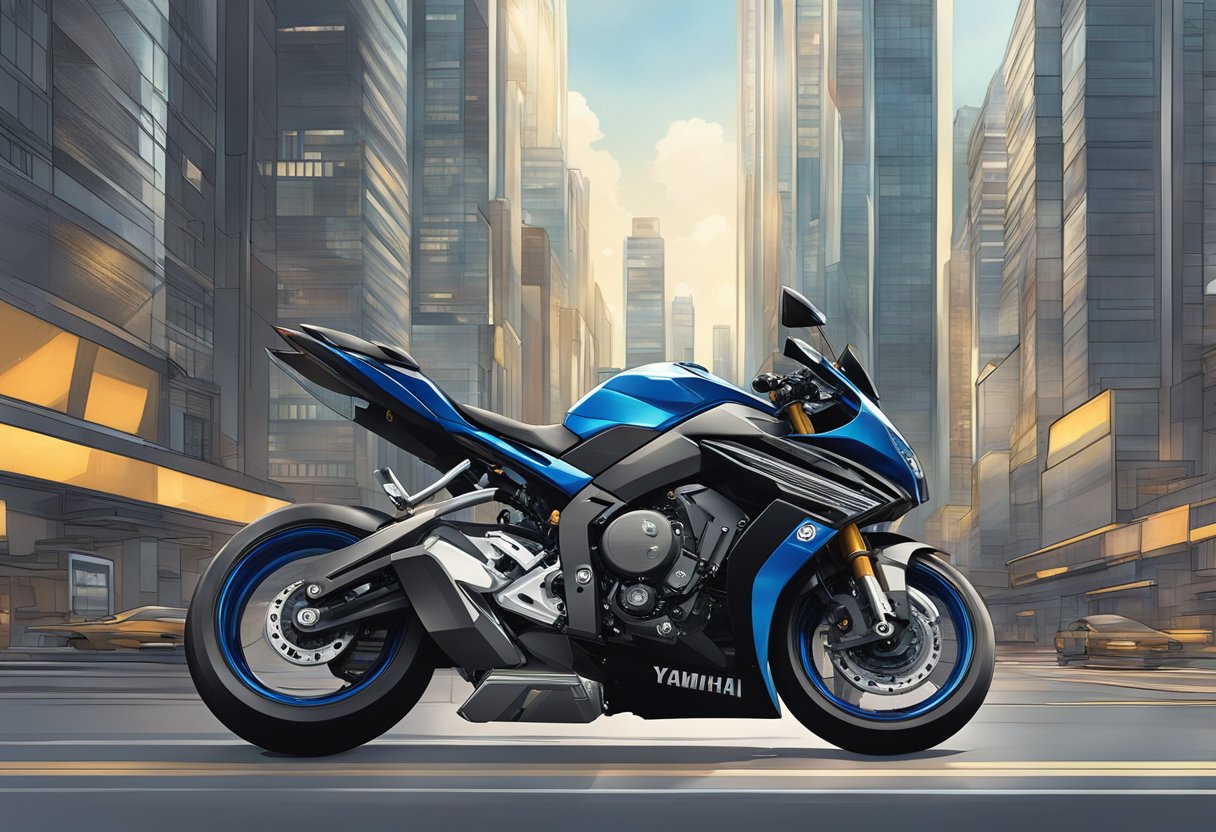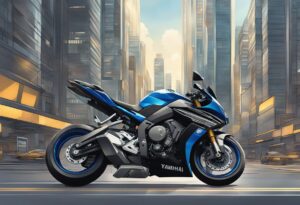Yamaha motorcycles have been at the forefront of innovation and performance since their inception in 1955. The brand has consistently pushed the limits of what’s possible in the world of two-wheeled transportation, delivering advanced features that elevate the riding experience. Yamaha has earned acclaim for producing high-performance bikes that seamlessly blend style, power, and technological advancements.
Yamaha’s pioneering motorcycle features are a fusion of performance and innovation, embodying a perfect blend of engineering prowess, innovation, and a passion for performance. The brand has continually pushed the boundaries of what’s possible in the world of two-wheeled transportation. Yamaha’s motorcycles are known for their advanced features that enhance the overall riding experience, including high-performance engines, advanced suspension systems, and cutting-edge electronics.
Whether you’re a seasoned rider or a newcomer to the world of motorcycles, Yamaha’s pioneering motorcycle features offer something for everyone. From the iconic Red Dragonfly to the latest Motoroid 2 concept, Yamaha continues to lead the way in innovation and performance, delivering motorcycles that are both exciting to ride and technologically advanced.
Historical Evolution of Yamaha Motorcycles
Yamaha Motorcycles has a rich history of innovation and performance that has spanned over 60 years. The company was founded in 1955 by Genichi Kawakami and quickly established itself as a leader in the motorcycle industry.
One of Yamaha’s earliest and most significant contributions to the industry was the creation of the YA-1, also known as the “Red Dragonfly.” This lightweight, 125cc two-stroke motorcycle was introduced in 1955 and quickly gained popularity in Japan. It boasted an impressive top speed of 80 km/h (50 mph) and set the foundation for Yamaha’s future success.
In the following years, Yamaha continued to push the boundaries of motorcycle design and performance. In 1960, Yamaha International Corporation began selling motorcycles in the USA, and in 1964, Phil Read gave Yamaha its first-ever World Championship, in the 250cc class. The YDS-3 was the first Yamaha streetbike to really capture the American imagination in 1966, and in 1967, the Yamaha TD1C 250cc production racer was released.
Throughout the 1970s and 1980s, Yamaha continued to innovate and introduce new features that set them apart from the competition. In 1973, the Yamaha TX750 was the first production motorcycle with a four-stroke engine and a five-speed transmission. In 1983, the Yamaha Venture Royale was the first motorcycle with a fully integrated fairing and stereo system, and in 1985, the Yamaha V-Max was introduced, which featured a powerful V4 engine and a unique, muscular design.
Today, Yamaha continues to innovate and push the boundaries of motorcycle design and performance. The company’s current lineup includes a wide range of motorcycles, from sportbikes to cruisers to adventure bikes, all of which feature Yamaha’s signature blend of performance and innovation.
Revolutionary Engine Technologies
Crossplane Crankshaft
One of Yamaha’s most notable engine technologies is the crossplane crankshaft. This unique design features a 90-degree crankshaft with an uneven firing order that creates a distinctive exhaust note and improves torque delivery. The crossplane crankshaft was first introduced on the 2009 Yamaha YZF-R1 and has since been implemented on other models, including the MT-10 and the YZF-R6.
Variable Valve Actuation
Variable Valve Actuation (VVA) is another advanced engine technology that Yamaha has developed. VVA allows for the adjustment of valve timing and lift, which improves engine performance and efficiency. The technology was first introduced on the 2015 Yamaha YZF-R1 and has since been used on other models, such as the MT-09 and the XSR900.
Liquid-Cooled Systems
Yamaha’s liquid-cooled engine systems are another example of the company’s innovative engine technologies. Liquid cooling allows for more efficient heat dissipation and better overall engine performance. Yamaha has been using liquid-cooled systems on their motorcycles since the early 1980s and continues to refine the technology with each new model.
In summary, Yamaha’s revolutionary engine technologies, such as the crossplane crankshaft, variable valve actuation, and liquid-cooled systems, have helped the company create high-performance motorcycles that are both powerful and efficient. These technologies are a testament to Yamaha’s commitment to innovation and their dedication to creating the best possible riding experience for their customers.
Advanced Chassis Design
Yamaha’s commitment to innovation and performance is evident in their advanced chassis design, which includes the Deltabox Frame and Monocross Suspension.
Deltabox Frame
The Deltabox Frame is a lightweight and rigid aluminum frame that provides excellent handling and stability. It is designed to distribute weight evenly, which improves the motorcycle’s balance and maneuverability. The frame’s triangular shape also helps to increase the rigidity and strength of the chassis, which enhances the overall performance of the motorcycle.
Monocross Suspension
The Monocross Suspension is a single-shock rear suspension system that provides a smooth and comfortable ride. It is designed to absorb shocks and vibrations from the road, which reduces rider fatigue and improves handling. The Monocross Suspension also helps to maintain the motorcycle’s balance and stability, even during high-speed maneuvers.
Overall, Yamaha’s advanced chassis design is a testament to their commitment to performance and innovation. The Deltabox Frame and Monocross Suspension are just two examples of the many features that make Yamaha motorcycles some of the most advanced and high-performing bikes on the market.
Electronic Riding Aids
Yamaha has been at the forefront of innovation in the motorcycle industry for decades, and the company’s electronic riding aids are no exception. These advanced features are designed to enhance rider safety and control, and they have become increasingly sophisticated over the years.
Traction Control Systems
One of the most important electronic riding aids is the traction control system. This feature helps prevent wheel slip and loss of control in slippery or wet conditions. Yamaha’s traction control system uses sensors to monitor the speed of the wheels and adjust the power output accordingly. This helps ensure that the rider maintains optimal control of the motorcycle at all times.
Slide Control Systems
Another important electronic riding aid is the slide control system. This feature helps prevent the rear wheel from sliding out of control during aggressive cornering or acceleration. Yamaha’s slide control system uses sensors to monitor the motorcycle’s speed, lean angle, and other factors to determine when the rear wheel is about to slide. It then adjusts the power output and braking force to prevent the slide from occurring.
Quick Shift Systems
Yamaha’s quick shift system is another advanced electronic riding aid that enhances rider control and performance. This feature allows the rider to shift gears quickly and smoothly without having to use the clutch. The system uses sensors to detect the gear shift and adjusts the power output accordingly, allowing for smooth and precise gear changes.
In summary, Yamaha’s electronic riding aids are among the most advanced in the motorcycle industry. These features enhance rider safety and control, and they have become increasingly sophisticated over the years. Traction control systems, slide control systems, and quick shift systems are just a few examples of the advanced features that Yamaha has developed to help riders get the most out of their motorcycles.
Aerodynamic Integrations
When it comes to Yamaha’s motorcycles, aerodynamics is a crucial aspect that is taken into account during the design process. Yamaha has consistently pushed the limits of innovation to deliver advanced features that elevate the riding experience. Here are some of the aerodynamic integrations that Yamaha has developed to enhance the performance of their motorcycles.
Wind Tunnel Development
Yamaha has made significant investments in wind tunnel development to improve the aerodynamics of their motorcycles. The wind tunnel is a tool that allows engineers to simulate the effects of different wind conditions and make adjustments to the design of the motorcycle. This process helps to reduce drag and improve stability at high speeds.
Active Aerodynamics
Active aerodynamics is a technology that allows the motorcycle to adjust its aerodynamic profile while in motion. This technology is particularly useful in racing situations where small changes in aerodynamics can make a significant difference in performance. Yamaha has incorporated active aerodynamics into some of their high-performance motorcycles, allowing riders to achieve faster lap times and greater stability on the track.
In conclusion, Yamaha’s commitment to innovation has led to the development of advanced aerodynamic integrations that enhance the performance of their motorcycles. The wind tunnel development and active aerodynamics are just two examples of the many ways that Yamaha is pushing the limits of what is possible in motorcycle design.
Sustainability Initiatives
Yamaha is a company that values sustainability and is committed to reducing its environmental impact. They have implemented various initiatives to achieve this goal. Here are a few examples:
Electric Motorcycle Innovations
Yamaha has been at the forefront of electric motorcycle technology. They have developed several models that are both efficient and eco-friendly. One such model is the Yamaha EC-05, an electric scooter that has a range of up to 65 miles on a single charge. It also has a top speed of 56 mph, making it a practical and efficient mode of transportation.
Another model is the Yamaha TY-E, an electric trials bike that was developed for competition use. It is powered by a high-output motor and a lithium-ion battery, which provides instant torque and acceleration. The TY-E is also lightweight and has a low center of gravity, making it nimble and easy to handle.
Fuel Efficiency Improvements
Yamaha has also made significant improvements in fuel efficiency. They have developed several technologies that help to reduce emissions and improve fuel economy. One such technology is the Blue Core engine, which is designed to provide both power and efficiency.
The Blue Core engine uses advanced fuel injection technology and a high-efficiency combustion chamber to improve fuel economy. It also has a lightweight design, which helps to reduce overall weight and improve handling.
In addition to the Blue Core engine, Yamaha has also developed a range of other technologies that help to improve fuel efficiency. These include aerodynamic designs, low-friction components, and advanced transmission systems.
Overall, Yamaha’s sustainability initiatives demonstrate their commitment to reducing their environmental impact. They continue to innovate and develop new technologies that help to improve efficiency and reduce emissions.
Yamaha’s Safety Features
When it comes to motorcycle safety, Yamaha has always been ahead of the game. Yamaha’s motorcycles come packed with safety features that are designed to keep you safe on the road. Here are some of the safety features that Yamaha offers:
ABS Technology
Yamaha motorcycles are equipped with Anti-lock Braking System (ABS) technology. This technology helps prevent the wheels from locking up during hard braking, which can cause the rider to lose control of the motorcycle. The ABS system on Yamaha motorcycles is designed to be lightweight and compact, so it doesn’t add unnecessary weight to the bike.
Unified Braking Systems
Unified Braking Systems (UBS) is another safety feature that Yamaha offers on its motorcycles. UBS is a braking system that links the front and rear brakes together, so that when the rider applies the rear brake, the front brake is also applied. This helps to distribute the braking force evenly between the front and rear wheels, which can help prevent the bike from skidding or sliding during hard braking.
Overall, Yamaha’s safety features are designed to keep you safe on the road, whether you’re commuting to work or taking a long road trip. With Yamaha’s ABS technology and Unified Braking Systems, you can ride with confidence, knowing that you have the best safety features available on your motorcycle.
Cultural Impact and Brand Legacy
Yamaha has been a major player in the motorcycle industry for decades and has established a strong brand legacy. The company has a reputation for producing high-performance bikes that seamlessly blend style, power, and technological advancements. Yamaha has consistently pushed the limits of innovation to deliver advanced features that elevate the riding experience.
One of the key cultural impacts of Yamaha’s motorcycles is their popularity among riders. Yamaha bikes have a loyal following, with many riders swearing by the brand and its products. This is due in part to Yamaha’s commitment to quality and innovation, as well as its ability to produce bikes that appeal to a wide range of riders.
Another cultural impact of Yamaha’s motorcycles is their influence on the racing world. Yamaha has a long history of success in motorcycle racing, with its bikes winning numerous championships and races around the world. This success has helped to cement Yamaha’s reputation as a top-tier motorcycle manufacturer and has inspired generations of riders to pursue their own racing dreams.
In terms of brand legacy, Yamaha has a reputation for quality and innovation that is unmatched in the industry. Yamaha’s commitment to producing high-performance bikes that push the limits of what is possible has helped to establish the brand as a leader in the motorcycle world. The company’s dedication to innovation has also helped to establish Yamaha as a pioneer in the industry, with many of its features and technologies being adopted by other manufacturers over the years.
Overall, Yamaha’s cultural impact and brand legacy are a testament to the company’s commitment to quality, innovation, and excellence. Whether you are a rider, a racer, or simply a fan of motorcycles, Yamaha’s bikes are sure to impress with their fusion of performance and innovation.








